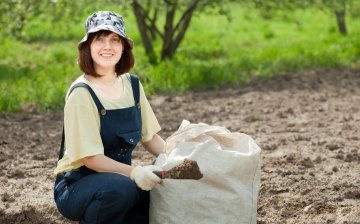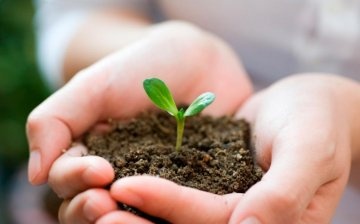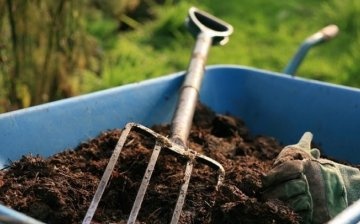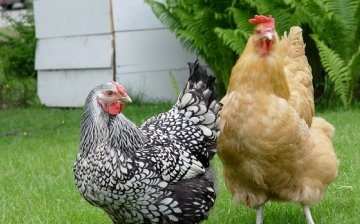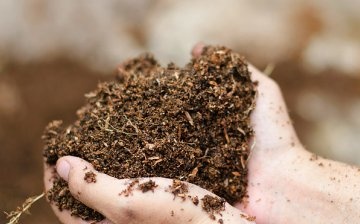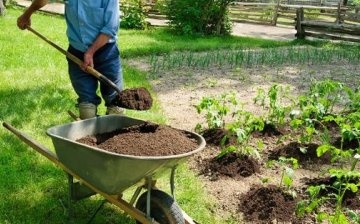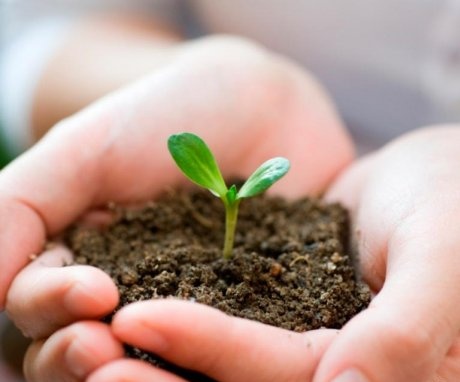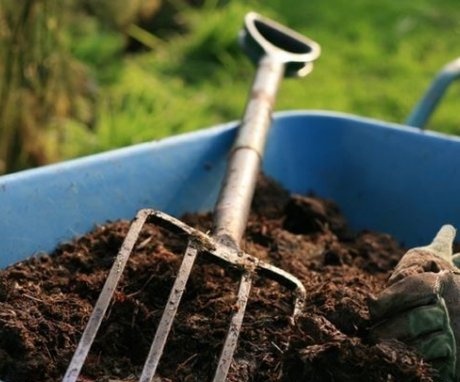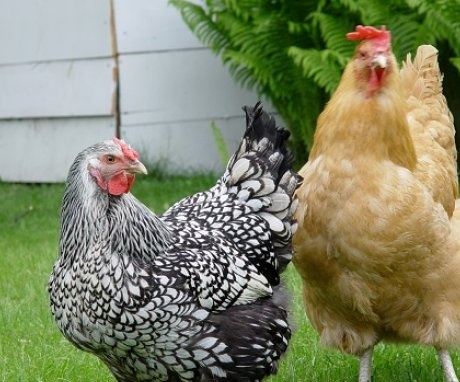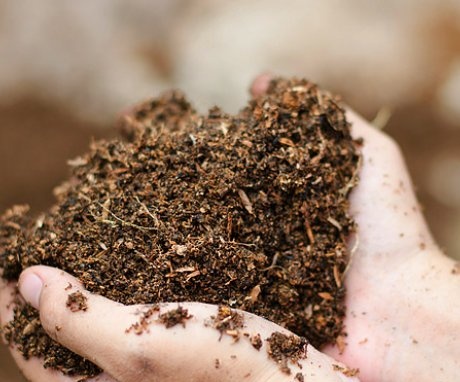Organic fertilizers: types, value and proper use
Introduction fertilizers into the soil is a mandatory step in growing any crop, be it vegetables or flowers. They promote more active plant growth, improve the structure of the soil, enrich it with all the necessary elements, and help retain heat.
Novice gardeners always wonder about the types of fertilizers and their use. Knowing about the nutrients of the earth will help the gardener grow his favorite vegetables, flowers, fruit trees and medicinal herbs. The characteristics of soil "vitamins", their types and proper use will be discussed in the plant breeder's cheat sheet.
Content
- All the value of organic
- Cattle manure
- Chicken droppings
- Compost, peat and sawdust
- We apply fertilizers correctly
All the value of organic
Organic fertilizers include such valuable elements as nitrogen, phosphorus, potassium, calcium and many other useful compounds. Fertilizers are usually subdivided into categories.
There are groups:
- Animal origin - cattle, pig, rabbit manure, poultry droppings.
- Vegetable - compost, bark, sawdust, straw, sapropel (silt deposits at the bottom of fresh waters), leaves.
Both groups are required for growing crops. Fertility vitamins contain the full spectrum of nutrients that plants need so much. They improve the structure of the soil. Heavy loamy soil, due to the introduction of humus and compost, becomes loose, better air permeability, the earth is softer, does not turn into "stone". When humus is applied, light soils begin to retain moisture better, become more viscous, heavy. The same can be said for sandy substrates. Moreover, the soil retains heat, which is important in the northern regions.
The value of organic matter lies in the fact that its nutrients, when decomposed, take a form accessible to plants.
Cultures easily absorb all the necessary elements in the right amount. It is very important to make fertilizers of any origin - they will enrich all types of soil.
The question of the need to use fertilizers is removed. Their use is necessary if the gardener wants to grow a bountiful harvest and admire the beauty of the garden.
Cattle manure
For the successful cultivation of various horticultural crops, all types of basic fertilizers are used. First of all, it is manure, in all its forms. Every gardener makes a compost heap without fail. Its value is in no way inferior to the animal type of organic matter. Other elements are also used - tree bark, sawdust and leaves. All these types of fertilizers can be collected and prepared here - on the site.
However, cow or horse manure will either have to be looked for or purchased. But if cattle are bred, there are no problems, everything is at hand for the successful cultivation of vegetables, fruits and flowers.
Before applying any fertilizer, you should understand in more detail their types, degree of decomposition and value.
The order of the introduction of "vitamins" for the soil will depend on this. The excrement of farm animals - cows, horses, pigs, sheep - is one of the most important and valuable fertilizers in the garden.Manure contains large amounts of nitrogen, potassium, phosphorus, manganese, cobalt, zinc, molybdenum and copper. It is divided into two types: litter and litterless.
The first is characterized by a mixture of liquid and solid excrement with straw, peat or sawdust. The mixture depends on what is being placed under the animal in the stall. Usually it is straw, peat and sawdust used less often. Such manure is of great value, since in addition to useful elements of animal origin, it contains plant compounds. Straw structures the soil even when decomposed. Thanks to the litter, the soil becomes loose and light. Litter manure is used depending on the degree of decomposition of the fertilizer. Allocate:
- Fresh fertilizer is poorly decomposed excrement, the straw does not change color, it is clearly visible in the mass. Fresh manure is usually applied in the fall, the land is plowed and left until spring, until the next plowing.
- Half-ripe manure is a decomposed mass of excrement, the straw loses its color, it breaks easily. Such fertilizer is applied to the soil both in autumn and in spring for crops when planting - a pre-sowing method.
- Rotted manure is the most commonly used decomposition rate. The mass acquires a uniform brown color. Fertilizer is applied to the soil in autumn or spring when planting, digging the soil for enrichment, added to substrates for indoor plants, used as mulch - pre-sowing and pre-sowing method.
- Humus is a completely decomposed mass that has a dark, uniform color. Every two to three years, humus is introduced into the soil throughout the garden in a fairly large amount - the general enrichment of the soil.
Litterless manure is a mixture of liquid and solid excrement. This type of fertilizer differs from the bedding fertilizer in its richer nitrogen content. Manure of this type is introduced into the soil with the obligatory subsequent digging of the soil. Otherwise, there is a risk of plant burns.
Litterless manure contains a large amount of nitrogen, potassium and phosphorus.
Therefore, it is worth bringing it in in the spring, and not in the fall. Nitrogen is washed out very quickly by groundwater. Therefore, it became necessary to apply this fertilizer in the spring, so as not to lose all the useful qualities of the fertilizer. Manure of this type is subdivided into:
- Semi-liquid - excrement containing animal urine and water. Fertilizer is applied to the soil in spring, followed by digging.
- Slurry - mainly the urine of farm animals with a small content of excrement and water. This type of manure is widely used for feeding plants when planting and during the growing season. The slurry must be diluted with water in a ratio of 1: 4 or 1:10, depending on the concentration.
Always consider the degree of decomposition of manure, whether litter or non-littered. It will depend on this yield... The soil is enriched with humus once every 2-3 years, fresh and rotted fertilizer is used locally when landing or digging the beds. The slurry is used for dressing. By alternating the elements of manure, the gardener will forget about the meager harvest. Crops will grow well and bear fruit.
Chicken droppings
Of all types of poultry manure, the most effective and useful one is isolated - chicken. It is in no way inferior in value to cattle manure. However, its application requires compliance with some rules:
- Primarily, chicken droppings must undergo a decontamination procedure, since the material may contain pathogens diseases... Fertilizer is not used in its pure form. It must overheat. Often, experienced gardeners add chicken or pigeon droppings to compost heap... The mixture lasts from one to three years. Only if it decomposes will the fertilizer benefit the soil and plants.
- Chicken manure contains not only nitrogen, potassium and phosphorus, but also B vitamins, amino acids and trace elements. Therefore, you should be patient and wait until the fertilizer is ready for application to the soil.It will enrich the soil, make it lighter and looser. Plants will receive all the necessary "vitamins" for growth and fruiting.
- It is advisable to dilute clean rotted droppings with water or compost. Fertilizer is applied only with subsequent digging of the soil. So root system plants will not get burned. Chicken manure is more often applied in the spring due to its high nitrogen content.
In general, poultry manure is distinguished by its special nutritional elements. But you need to make it with caution - in a rotted form, mixed with compost or other plant materials.
Compost, peat and sawdust
Perhaps the easiest to prepare fertilizer compost is considered. In the process of growing crops, a large number of weeded crops are always heated. weeds, mowed grass, twigs from trees, rotten fruits and other plant waste. All these garbage cannot be annihilated. A small corner in the garden is allocated for them - all the processed plant material is put there. The compost heap grows over time and its lower layers begin to decompose.
The most valuable source of nutrients is the decomposition product of the compost heap - the lower layers.
After a year or two, they take on a dark, earthy color. The mass is used to enrich the soil. Composting is equivalent to feeding manure by value. Usually, such fertilizer is applied to the wells during planting, crops are fed during the growing season, and used to enrich substrates for indoor plants.
The compost heap is often mixed with peat, sawdust and chicken droppings. It is advisable to periodically water the pile with water. So the decomposition process will go faster. It is better to organize a "compost corner" in a bright area so that sunlight falls on it. If it is not possible to regularly apply humus or rotted manure, compost will become a "lifesaver" - vegetable fertilizer is not inferior in value to an animal.
Peat and sawdust are usually not applied separately as fertilizer. These plant components are added to compost or manure. However, many gardeners mix these elements, moisturize, and leave the rotting under pressure. The resulting material is used as mulch with the addition of rotted manure or compost.
You should be extremely careful with peat, as it is characterized by varying degrees of acidity.
Sphagnum, for example, cannot be used as fertilizer. Low-lying peat is suitable for these purposes. Moreover, it must have a high degree of decomposition. It is advisable to use peat as a fertilizer on loamy soils. It perfectly structures the soil, making it lighter and looser. Peat is often mixed with other types of organic fertilizers.
Knowing all the popular types of basic fertilizers and their characteristics, the gardener will no longer be mistaken in choosing a method of soil enrichment. It remains to figure out the correct introduction of useful elements.
We apply fertilizers correctly
Many novice gardeners believe that the more manure brought in, the better. However, this is not quite true. An oversupply of fertilizer does not promote plant growth. The root system can get burned as the manure in the soil continues to rot. It gives off heat, which can lead to burning of the roots. This is especially true of liquid fertilizers, fresh. Therefore, observe the measure everywhere.
Bird droppings, for example, are introduced into the soil in a ratio of 200 grams per 1 m2. Humus is brought to the site every two to three years. The mass is evenly distributed over the territory and well dug up. After a large-scale enrichment of the soil, nothing is usually added to the soil. And next year, you can locally feed the plants with rotted manure or compost.
If it is not possible to enrich the soil on a large scale with humus, add a small amount of rotted manure, chicken droppings or compost into the holes before planting.
Mix it with earth, moisten it and only then plant a plant in the hole. Fresh manure for planting crops is not introduced, only decomposed material. Be careful, otherwise the plant will get burned.
Observing the norms for the use of organic fertilizers of animal and plant origin, crops will always turn green and bear fruit on the site in any weather. The main thing is to observe the measure and make fertilizer to the degree of decomposition required for a particular site.
More information can be found in the video.



